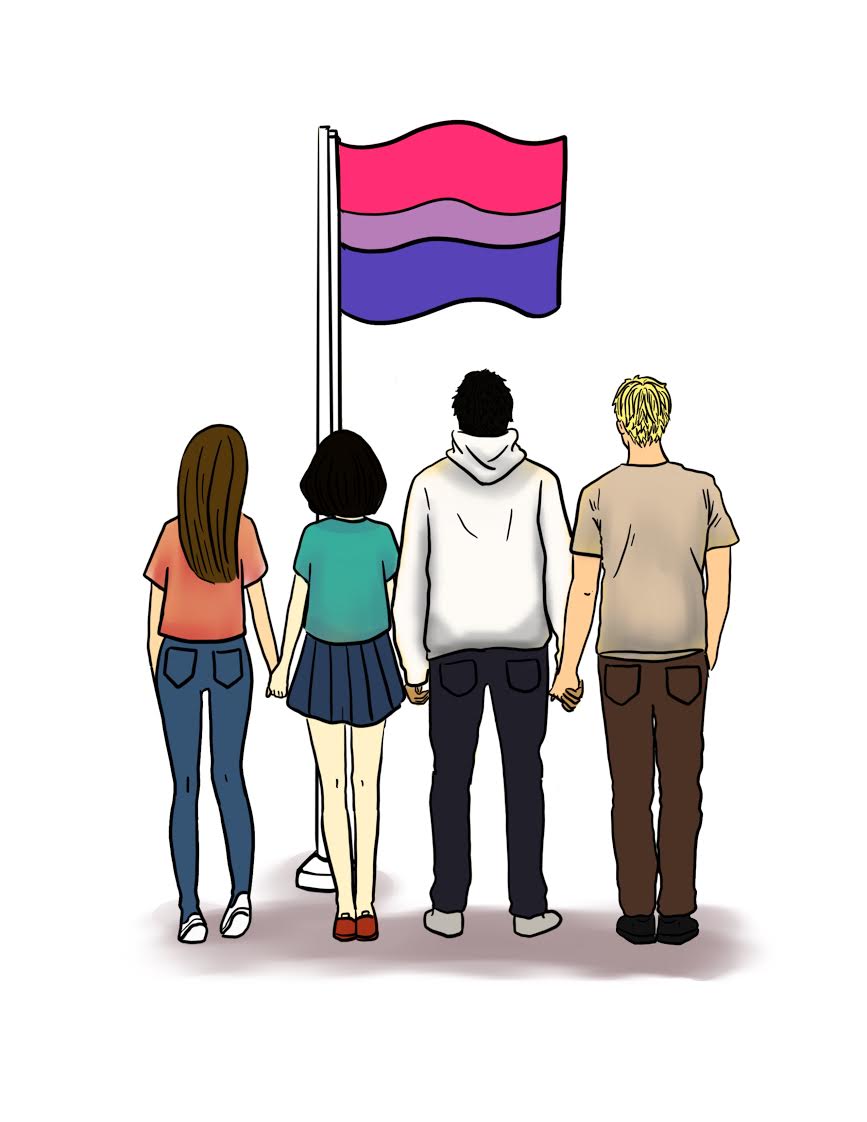Bisexuals are likely to experience more discrimination than other members of the LGBTQ community due to misconceptions and stereotypes, which leads to bisexual invisibility, also known as bi-erasure.
A study conducted in 2015 by the University of Massachusetts surveyed 745 people who identify as bisexual and found that discrimination from heterosexuals was higher than the discrimination from other members of the LGBTQ community, but the levels were not significantly different.
Sarina Loeb, coordinator of the Pride Center on campus, said the biphobia some people have only causes bi-erasure, which is when the sexual identity is trivialized and dismissed.
“Some popular misconceptions about bisexuals are that they are confused or they are uncertain of their sexuality, which is not the case,” Loeb said.
Likewise, Matthew Clements, a queer studies professor at CSUN, said in his experience, gay men along with straight women, are turned off by the idea of being in a relationship with someone who identifies as bisexual due to misinterpretations of the identity as well as mistrust.
“There are only a select few that are able to see through the stereotypes and respond to the individual,” Clements said.
Another reason why Clements believes there is a negative stigma about bisexuals is because there has not been enough recognition for them in society, which causes bisexuals to be misrepresented.
“We have built up a history of recognition for L and G, and increasingly T and definitely Q, but we haven’t really built in an understanding for bisexuality,” Clements said.
Ironically, bisexuals make up the largest percentage of the LGBTQ community, according to Clements. In a study published in The Journal of Sexual Medicine, 3.1 percent of Americans identified as bisexual, whereas only 2.5 percent identified as gay or lesbian. However, due to the negative stereotypes about the identity, many people do not come out as bisexual.
Nicole Aleman, a 22-year-old liberal studies major, said she has experienced shame from family, friends and community because she identifies as bisexual, which she described as a battle when she just wanted to be herself.
“I didn’t want to be further stigmatized for being who I am,” Aleman said. “It’s kind of already hard being a minority, Latino wise, from where I come from, and to come out in the LGBTQ community, to be a double minority, it makes it even harder to be yourself.”
A 2013 Pew Research Survey found that only 28 percent of people who identified as bisexual were open about themselves, which is partly due to the fact many of them fear biphobia, so they decide not to come out.
Aleman said despite the shame she felt earlier on, she was relieved when she transferred to CSUN because she said she felt more open about herself.
“I transferred here from Moorpark College [where it is] predominantly straight and white,” Aleman said. “When I came here, I was excited because I already knew there was going to be a lot more diversity and I knew there was a Pride Center here. It was going to be better for me and it is better.”
Loeb said the Pride Center has had some events, such as Beyond the Binary, which discuss bisexuality along with other identities. Along with this, Loeb also said the Pride Center offers a peer mentor program to help students and the center also offers Tuesday Talks and LGBTQ Coffee Nights for students to speak about their experiences or discuss topics relating to the LGBTQ community.
“We are always looking at different programs to promote visibility,” Loeb said. “We are always open.”
Aleman said the campus can do a bit more in terms of promoting bi-visibility because it is a topic that still is not discussed as it should be.
“I’ve only seen like two events, in terms of the Pride Center’s advertising of events, that are bi-focused in the year that I’ve been here,” Aleman said. “They can do a little better.”
Clements said he received an email that the Pride Center is currently working on some groups this semester that seem to be more focused on bisexuals and the issues they face.
“The Pride Center is starting something new this term about a bisexual event targeting students who are bi-curious and who are bi,” Clements said. “At the same time, I received another email talking about ‘hey, let’s start a staff and faculty bisexual group.’”
Clements also said there is literature taught in the English department that involves bisexual experience, which is another way students can become educated about bisexuality.
According to Clements, there is a high chance negative stigma about bisexuals can disappear in the future.
“Statistics already show that a tremendous amount of individuals in [the millennial] generation don’t identify as heterosexual and don’t necessarily say what they do identify as,” Clements said. “This leaves open the possibility for discussion and understanding.”






